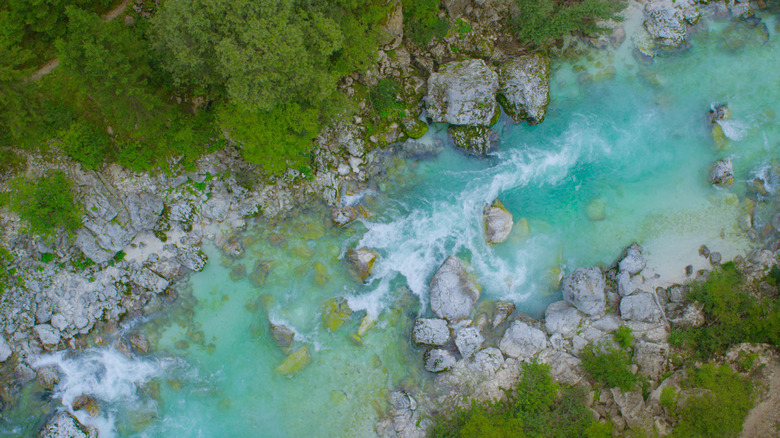How Does An Ecosystem Work?
Flora
Flora
Plants, or flora, are the primary producers of an ecosystem. They absorb sunlight and carbon dioxide (CO2) from the atmosphere and use water and minerals from the soil to make their own food. They excrete oxygen and moisture, in the form of water vapor, as waste, and their leaves, fruit and stems provide nutrition for their primary consumers, animals.
Fauna
Fauna
Animals, or fauna, are both primary and secondary consumers. Herbivores, or those animals which eat only plants, are considered primary consumers. They eat the plants, breath in oxygen and exhale carbon dioxide. Their feces also contains elements that are broken down by weather, bacteria and insects into nutrients that feed plants. Secondary consumers are those creatures that feed upon herbivores and each other. Carnivores eat a small amount of the herbivores and each other as a way to control the population. Sarcovores, or carrion feeders, also eat herbivores and carnivores, but only after they are dead, which helps return nutrients to the soil that ultimately feeds plants.
Weather
Weather
The weather is important in determining the type of ecosystem that evolves. Desert ecosystems, which receive minimal rainfall, usually spawn plants that conserve water and flower (reproduce) only after a rain. Similarly, animals in a desert environment have adapted to the lack of water and extreme temperatures. In a rain-forest ecosystem, however, the plentiful water and abundant heat allow a variety of plants to remain active year-round, and they support a wide array of specialized animals that contribute to each others' survival. Temperate environments are cyclical in nature: Part of the year is cold and part of the year is warm. Plants and animals in these regions develop a cyclical nature of activities. Plants generally go into hibernation by casting off their leaves and regrowing them in spring, while some animals also hibernate to conserve resources during the long winter months. During warmer months, both plants and animals are highly active, replacing lost weight or leaves, reproducing and preparing for the next hibernation cycle.
Imbalance
Imbalance
An imbalance in an ecosystem occurs when one (or more) elements of the ecosystem becomes dominant, forcing out other elements. For example, if carnivores (say, a wolf) are eliminated from an ecosystem, then too many herbivores (for example, deer) are allowed to grow to maturity and reproduce. The growing number of herbivores deplete the plants, preventing them from reproducing and thus leaving fewer offspring behind. Eventually, the herbivores will begin to starve in large numbers, possibly even becoming extinct in that region. Similarly, if rain fall, temperature, seasonal cycle, the presence of sarcovores, and the presence of herbivores are altered, the system will break down and the entire region will be affected adversely.
Cite This Article
MLA
Hinckley, Michael. "How Does An Ecosystem Work?" sciencing.com, https://www.sciencing.com/ecosystem-work-5333030/. 22 November 2019.
APA
Hinckley, Michael. (2019, November 22). How Does An Ecosystem Work?. sciencing.com. Retrieved from https://www.sciencing.com/ecosystem-work-5333030/
Chicago
Hinckley, Michael. How Does An Ecosystem Work? last modified August 30, 2022. https://www.sciencing.com/ecosystem-work-5333030/
